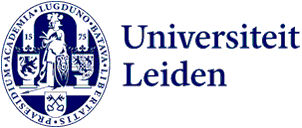
Depot or place of honour: what to do with Nobel laureates in the museum?
What do you do with a museum collection full of individual white Nobel laureates at a time when diversity, inclusion and teamwork reign supreme? Ad Maas, professor by special appointment, and researcher Hilbrand Wouters have been awarded an NWO Museum grant to answer that question.
Nobel laureates have disappeared from Museum Boerhaave. While the museum traditionally paid a lot of attention to these science figureheads, when the last theme was redesigned, they were removed from the collection. 'We wanted to focus more on current and even future research there,' Maas, who is also curator at Museum Boerhaave, explains. 'As a result, we are now looking for a new place for our Nobel collection, in line with the sentiment that the indiscriminate veneration of old white men is outdated. We want to show a more diverse picture of scientists and make it clear that science is often not the work of brilliant individuals, but sometimes of huge teams.'
From national icons to cogs in a team
A special museum grant should help researcher Hilbrand Wouters address this issue. 'I’m going to look at the broader question behind what goes on in science museums,' he explains. 'How have they portrayed leading scientists over time?' During the late nineteenth and twentieth centuries, scientists were mostly considered national icons and science museums were often an extension of that nationalist viewpoint. I want to know how we can learn lessons from that and what we can still do with that heritage today.'
'You can see that people have been looking for a different kind of role model in recent years,' Maas adds. 'After a period of somewhat more historical distance, at the beginning of the century we were still very much preoccupied with our national identity, with canons, for example. In the past five years, that has completely reversed again. Now the emphasis is more on diversity and inclusion. That also changes the characteristics attributed to scientists. Whereas before they were brilliant loners, nowadays the emphasis is on teamwork.'
People like to see a face
'I am therefore going to look at different science museums to see what capabilities were attributed to scientists,' Wouters says. 'Is it only about discoveries or, for example, didactics as well? As a scientist, do you have to be a solitary scholar or can you also be a kind of adventurer, or a team player? And, of course, what role do gender and origin play here? I’m primarily looking scientifically at what has happened historically in the field, but the intention is also to come up with an opinion or example that will be useful for Boerhaave.'
Exactly what this will mean remains to be seen, but for Maas there is no doubt that the Nobel laureates will return to Boerhaave. 'A biographical approach often works better than presenting science without such a context. Visitors find it inspiring and fun to see people who have done something special and to emulate them. The only question is how best we can present that.'
